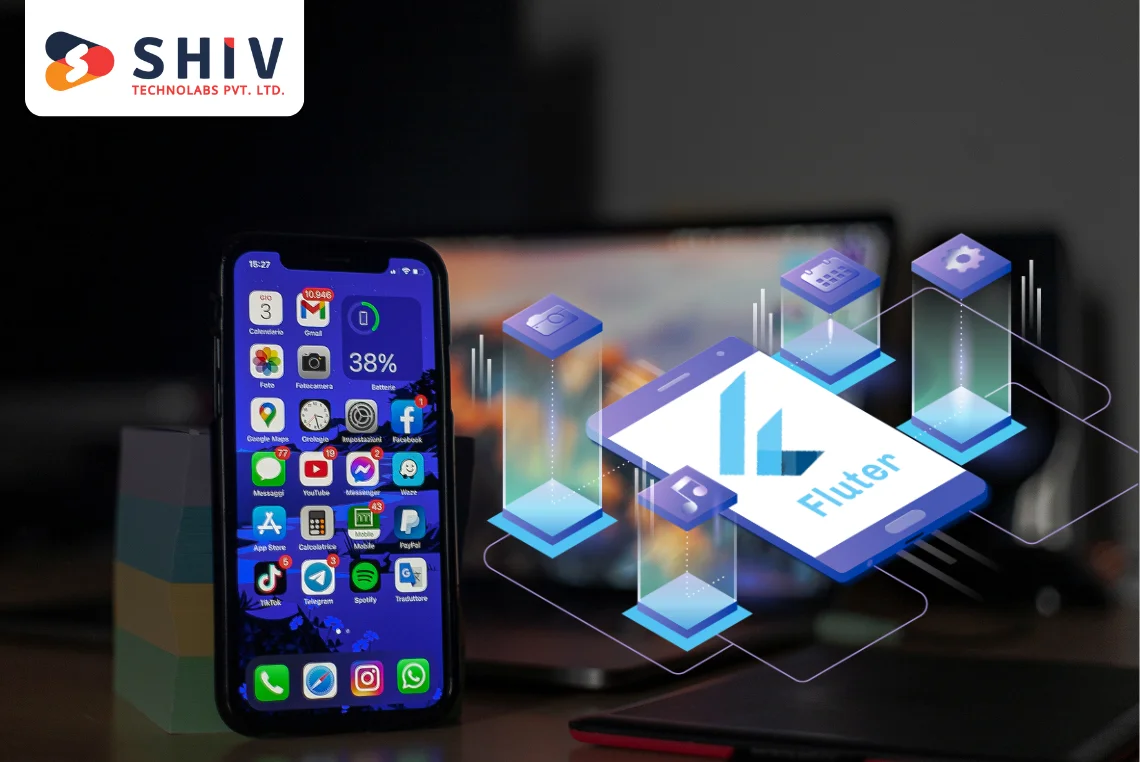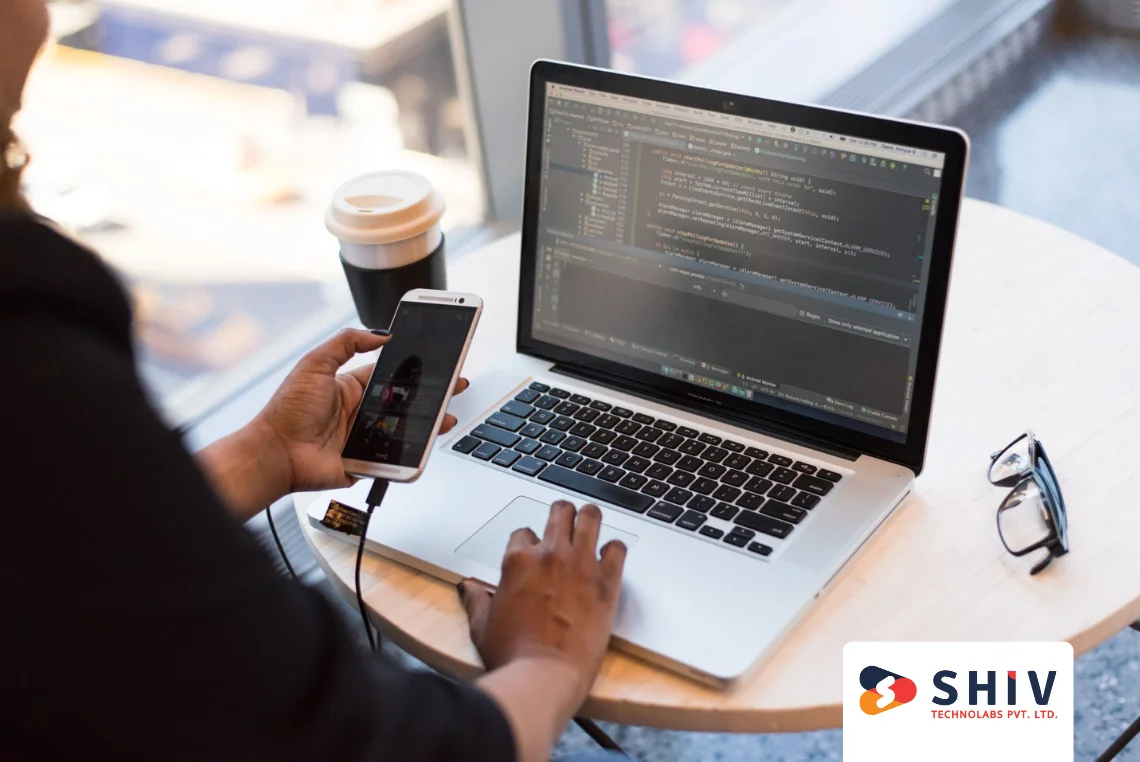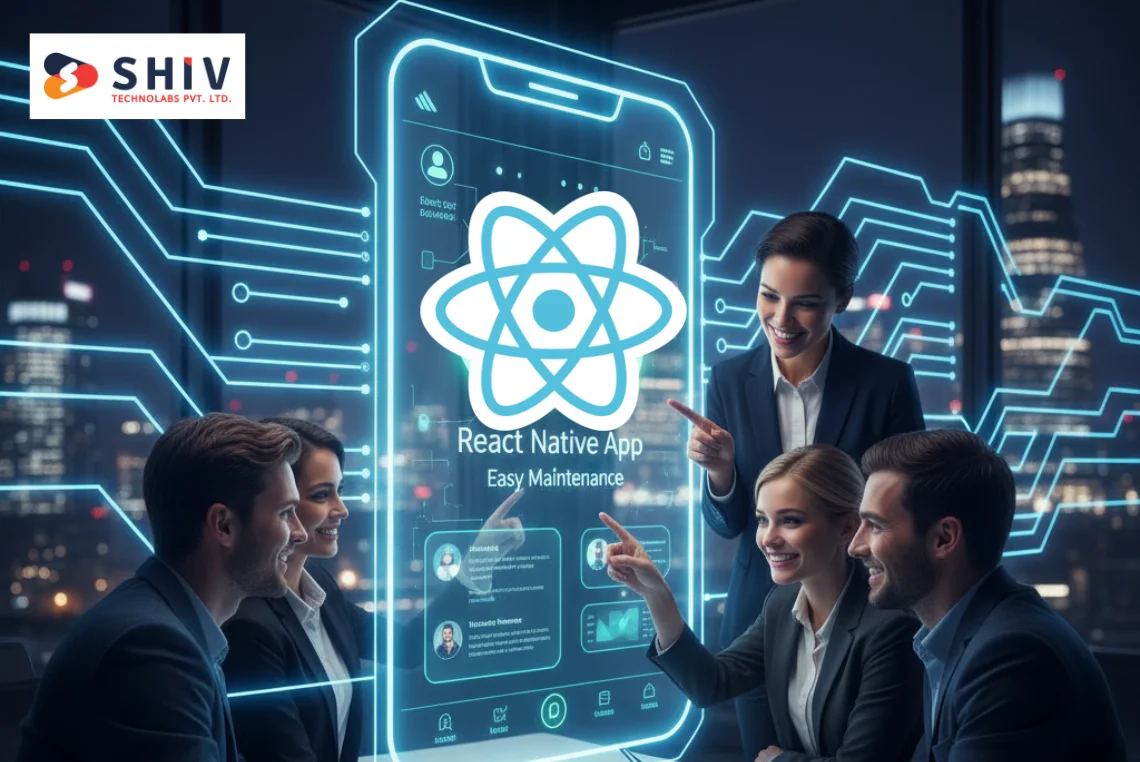Table of Contents
On-demand app development now powers food delivery, telehealth, mobility, home services, and logistics across busy markets. Businesses need a fast path from idea to store listing without sacrificing design quality or performance under load. Flutter app development services give teams the speed with consistent UI, shared logic, and native-like performance on both platforms.
You ship polished features faster because one codebase covers Android and iOS, including tests, assets, and analytics. Product teams launch core flows like signup, search, checkout, tracking, and support without building everything twice. That pace helps startups win pilots and helps enterprises control cost, timelines, and future roadmap commitments with confidence.
Flutter keeps releasing predictably, so marketing can plan campaigns and growth teams can test pricing or bundles quickly. Engineering avoids duplicate fixes, while designers keep brand consistency across devices, densities, and screen sizes. Leaders get clearer delivery dates and cleaner analytics because events, experiments, and UI states match across platforms. Teams catch bugs earlier since QA runs one suite against identical features across platforms and builds.
What Makes Flutter a Preferred Choice for On-Demand App Development?
Flutter for on-demand apps works well because one codebase drives feature parity and faster weekly releases. Teams move through sprints faster, cut duplicate testing, and publish updates together on Android and iOS. That rhythm protects user experience during busy hours when maps, carts, and chats must respond without delay.
Flutter app development produces fast screens because widgets render directly, avoiding bridges that introduce extra overhead. The UI feels native, gestures remain crisp, and animations hit high frame rates without stutter. Checkout flows benefit most, since lag during address search, coupon apply, or gateway handoff can hurt conversion.
Design teams like Flutter because they create once and reuse patterns across phones, tablets, and foldables. Shared components reduce layout drift, improve readability, and keep brand colors and motion consistent across releases. You ship feature flags, experiments, and seasonal themes without juggling two separate design systems or libraries.
Industries seeing strong results include delivery, eCommerce, telehealth, field service networks, mobility, and warehouse operations. Startups gain reach with smaller teams, while SMEs reduce budget pressure by avoiding duplicate code work. Enterprises get reliable roadmaps, measured costs, and faster pilots before scaling to regional or global rollouts. Security reviews also move faster because both platforms share the same code paths and dependency set.
How Does Flutter Simplify On-Demand App Development?
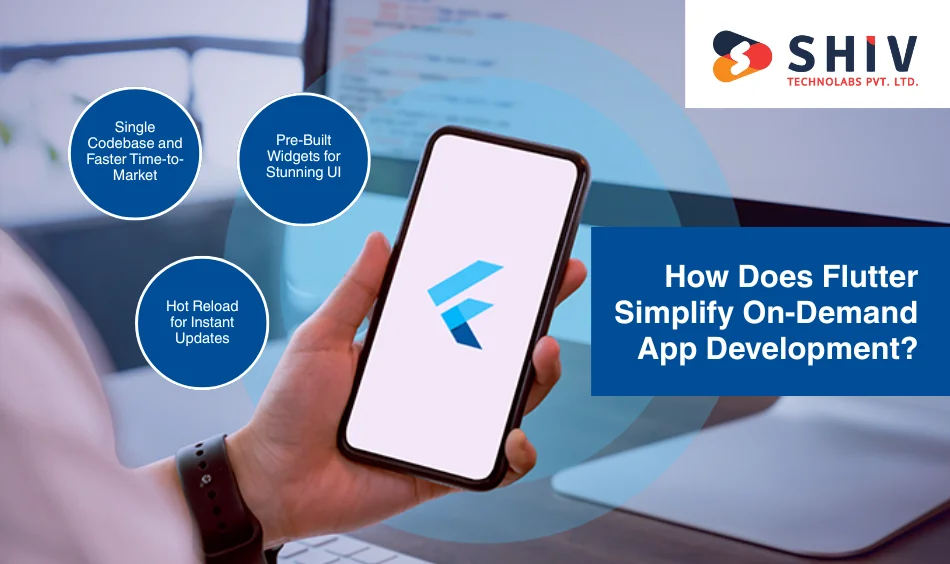
Single Codebase and Faster Time-to-Market
A single codebase cuts planning time, reduces handoffs, and helps teams ship features together every release. Engineers share business logic, analytics events, and test suites, so fixes and improvements roll out together. Product managers map the same backlog across stores, keeping parity for signup, payments, tracking, and support.
Marketing can plan bold launches because release timing matches on both platforms, which improves campaign performance. This approach suits MVPs and pilots that need quick validation before funding rounds, partnerships, or city launches. Teams keep momentum after launch, adding loyalty, subscriptions, or chat without splitting work across separate stacks. Developers focus on features that drive retention instead of managing two code lines and duplicated pipelines. That focus speeds learning cycles, improves NPS, and lowers churn during the critical early growth phase.
Pre-Built Widgets for Stunning UI
Flutter ships with rich, customizable widgets that fit on-demand app needs out of the box. Teams craft polished menus, carts, maps, and order steps without rebuilding base components from scratch. Designers keep brand consistency across devices while developers keep screens responsive during peak ordering windows.
These widgets shorten design cycles and reduce front-end drift between iOS and Android. Your team reuses layouts, motion patterns, and typography across features and releases. You reach parity faster, and users see familiar patterns that support quick actions and repeat use.
Hot Reload for Instant Updates
Hot reload lets engineers view code changes in seconds without restarting the full build. That speed helps squads ship fixes during pilots and refine conversion points during active campaigns. Product managers test copy, spacing, and checkout steps quickly, then publish improvements to both stores on schedule.
This feature also reduces debugging time when teams add core flows for on-demand app development. Engineers confirm UI states, validation rules, and network responses on the spot. That feedback loop supports cleaner releases and keeps Flutter app development moving at a steady pace.
Flutter vs. Native Development (Quick View)
| Feature | Flutter | Native App |
|---|---|---|
| Codebase | Single | Separate for iOS & Android |
| Development Speed | Fast | Moderate |
| Maintenance | Easier | Complex |
| Cost | Lower | Higher |
Why Flutter is Best for On-Demand App Development?
Smooth User Experience Across Platforms
Flutter renders at high frame rates, which keeps animations and gestures crisp during busy hours. Users get fast screens for browsing, cart, and tracking, which protects checkout completion and session time.
Integration with APIs and Backend Systems
Flutter connects cleanly with REST, GraphQL, WebSockets, and gRPC for real-time features. Teams add payments, identity checks, maps, and push alerts while keeping shared logic across platforms.
Scalable Architecture for Future Growth
Apps start with a focused MVP and grow into regional or global rollouts. Modules for loyalty, subscriptions, and chat plug-in without splitting teams across separate code lines. That approach supports why Flutter is best for on-demand app development when roadmaps expand.
Advantages of Using Flutter for On-Demand Apps
The points below summarize the advantages of using Flutter for on-demand apps that matter most to product teams:
- Faster app performance with Dart and efficient rendering.
- Lower build and maintenance costs from a single codebase.
- Consistent UI across iOS and Android with shared components.
- Strong community plus steady guidance from Google.
- Easier updates and hotfixes with hot reload and shared tests.
- Future-ready structure that supports new features and markets.
What Is the Cost to Develop an On-Demand App Using Flutter?
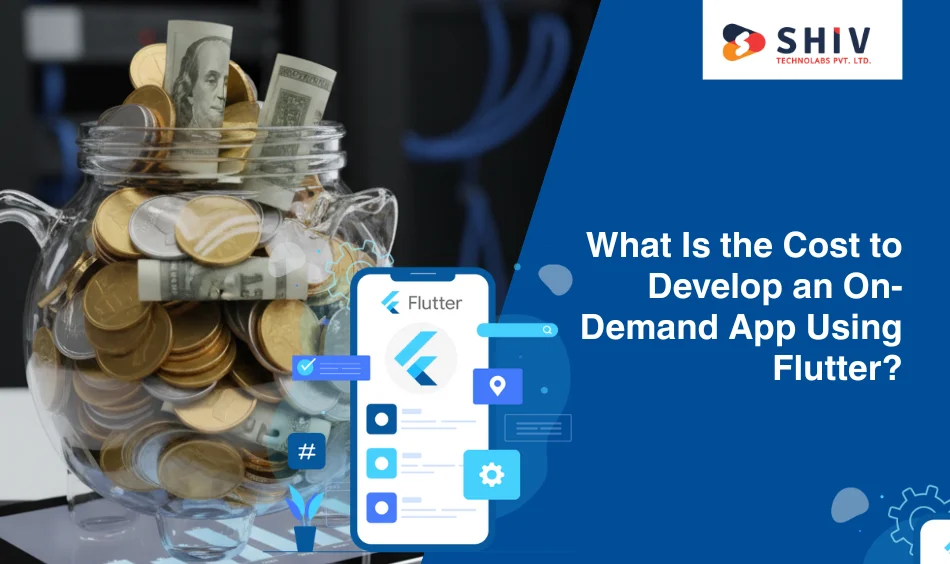
Project scope drives budget more than any single factor across mobile builds for on-demand platforms. Features, custom screens, third-party integrations, and backend complexity directly affect estimates and delivery timelines significantly. Team location and seniority also shift rates, which influence total cost and project pacing from start to handoff.
The cost to develop an on-demand app using Flutter tends to be lower because one codebase serves both platforms. You reduce engineering hours, shrink duplicate QA, and simplify release planning for marketing and growth campaigns. Maintenance also improves because fixes, upgrades, and new features follow identical paths across iOS and Android.
Use the table below as a planning guide, then add a buffer for audits or advanced workflow rules.
| App Type | Estimated Cost (USD) | Development Time |
|---|---|---|
| Basic On-Demand App | $10,000–$20,000 | 4–6 weeks |
| Mid-Level App | $20,000–$40,000 | 6–10 weeks |
| Advanced App | $40,000–$70,000 | 10–14 weeks |
Real-World Examples of On-Demand Apps Built with Flutter
Well-known products demonstrate Flutter’s speed and visual quality under real customer traffic and frequent updates. Alibaba’s Xianyu marketplace runs rich screens smoothly, while handling heavy sessions and complex catalog interactions. Google Ads delivers responsive workflows with live data, supporting quick edits and campaign checks across devices.
In automotive, BMW highlights consistent experiences across platforms along with faster iteration on feature roadmaps for drivers and owners. These examples show how shared code, steady tools, and high frame rates support demanding on-demand use cases. Teams spend more time on growth features instead of chasing separate platform bugs or inconsistent UI states.
How to Choose the Right Partner for Flutter App Development?
Start with a portfolio that shows delivery, mobility, healthcare, retail, and logistics experience across multiple releases. Look for clear metrics on throughput, defect rates, release cadence, and improvements tied to conversion or retention. Ask about CI/CD, testing depth, security reviews, and experience with payments, identity, maps, and notifications at scale.
Confirm API skills across REST, GraphQL, WebSockets, and gRPC, plus real-time messaging and analytics pipelines for feature experiments. Request details on feature flags, rollout strategies, and support commitments covering incidents, tuning, and minor upgrades. Finally, confirm the team’s capacity to staff product, design, and engineering with senior leadership involvement throughout delivery.
Conclusion
Flutter helps teams deliver fast, consistent on-demand apps without maintaining separate stacks or duplicate backlogs. One codebase reduces rework, pre-built widgets improve polish, and hot reload accelerates fixes during critical moments. You can launch a focused MVP, gather data, and extend features based on traction, feedback, and partnerships.
If you want steady delivery and clear ownership across both platforms, partner with a seasoned Flutter app development company like Shiv Technolabs. Our team will guide discovery, build roadmaps, and support releases with transparent milestones and measurable outcomes. That structure keeps teams aligned while your product adapts to markets, regulations, and real customer behavior.
FAQs
Q1. Why is Flutter suitable for on-demand apps?
Flutter suits on-demand apps because one codebase covers both platforms with strong performance and polished UI. Teams ship features faster, hold parity across releases, and keep experiences consistent during busy transaction windows.
Q2. What are the main benefits of using Flutter for on-demand app development?
Key benefits include shared logic, rich widgets, hot reload, and lower maintenance from unified testing and builds. Product teams get faster iteration, while design teams maintain consistent patterns across phones, tablets, and foldables.
Q3. How long does it take to develop an on-demand app with Flutter?
Most timelines range from four to twelve weeks, depending on scope, integrations, and staffing seniority across roles. Focused MVPs usually land faster, while complex logistics, logic, or video features add meaningful time to delivery schedules.
Q4. Is Flutter cost-effective compared to native app development?
Yes, Flutter often costs less than native because one team maintains a single production codebase. You cut duplicated builds, parallel fixes, and repeated QA cycles across two separate stacks and pipelines.
Q5. Which industries can use Flutter for on-demand apps?
Flutter works well for healthcare, logistics, eCommerce, food delivery, transportation, and education service models across regions. These sectors value quick updates, stable performance, and clear design patterns across iOS and Android devices. Shared code helps distributed teams move faster while maintaining reliability during peaks and seasonal demand in multiple cities.

